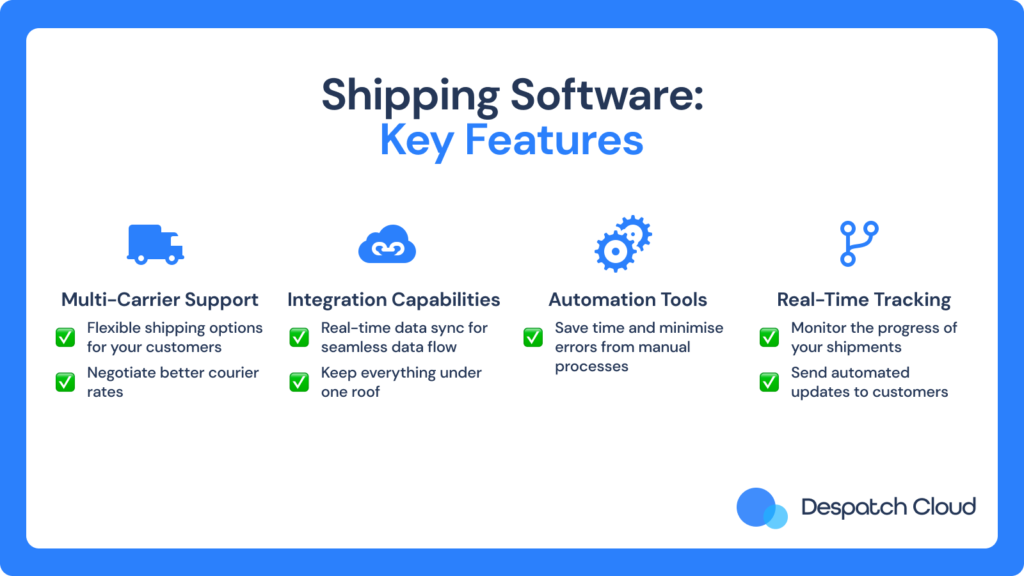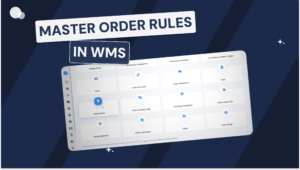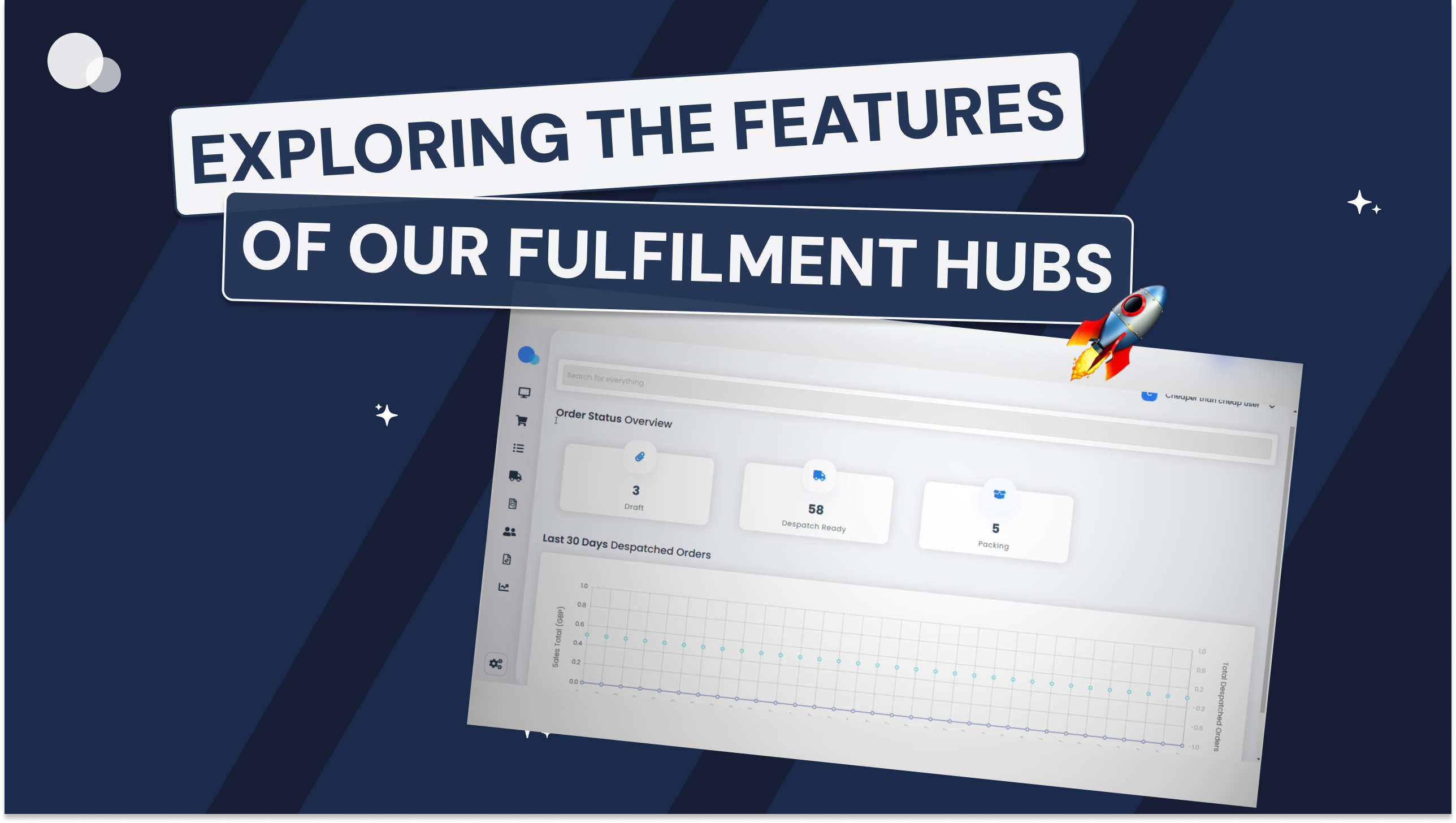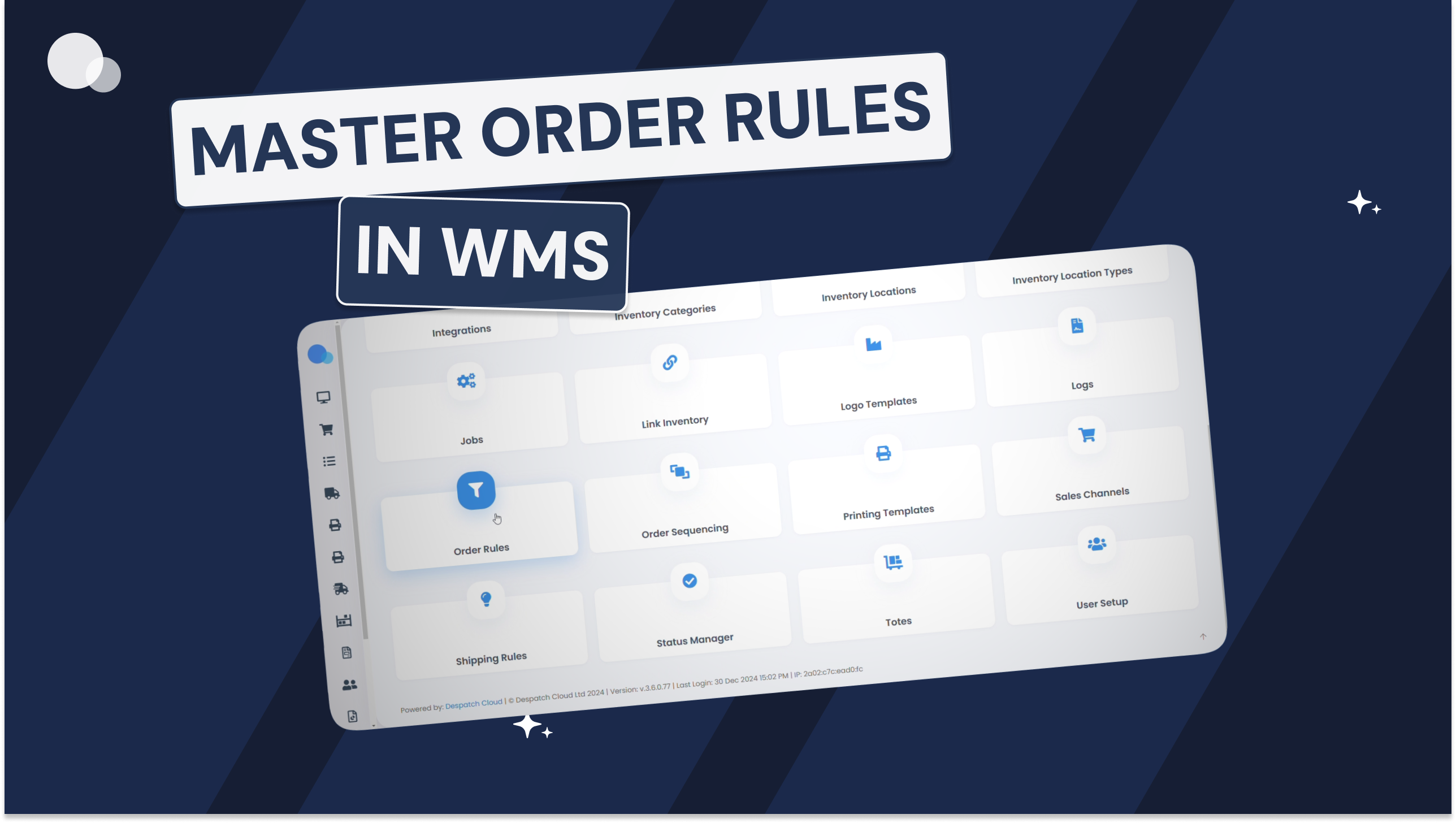
What is Shipping Software?
Shipping software is a tool that helps businesses manage their shipping processes more efficiently. It integrates with various carriers, automates label printing, tracks shipments in real-time, and provides essential analytics. By centralising these tasks, shipping software simplifies logistics, reduces manual errors, and ensures a seamless experience for both the business and its customers. With customers expecting faster delivery times and reliable service, choosing the right shipping management solution can make or break your business.
In this guide, we’ll walk you through the essential factors to consider when selecting shipping software. From understanding your specific needs to evaluating key features, cost considerations, and ease of use, we’ll provide you with the insights needed to make an informed decision. By the end of this blog, you’ll be equipped with the knowledge to choose the best shipping software that aligns perfectly with your business goals. Let’s get started!
Understanding Your Shipping Needs
Identify Your Requirements
Before diving into the specifics of different shipping software options, it’s crucial to identify your shipping requirements. This foundational step ensures that the software you choose aligns perfectly with your business operations and goals. Here are key areas to consider:
Volume of Shipments
Evaluate the number of shipments your business handles on a daily, weekly, or monthly basis. If you’re a small business with a lower volume, you might not need the same robust features required by larger enterprises managing thousands of orders. Understanding your shipment volume helps in choosing software that can scale with your business growth.
Types of Products
Consider the types of products you ship. Are they fragile, oversized, or perishable? Different products require specific shipping solutions. For example, fragile items may need special handling instructions, while perishable goods might require expedited shipping options. Ensuring the software supports these requirements can prevent potential issues down the line.
Domestic vs. International Shipping
Determine whether your business ships domestically, internationally, or both. International shipping comes with its own set of complexities, such as customs regulations, import/export restrictions, and currency conversions. Shipping software that supports international logistics, provides automated customs documentation, and offers multi-currency support can significantly simplify these processes.
By thoroughly understanding your shipping needs in terms of volume, product types, and shipping destinations, you can make a more informed choice when selecting the best shipping software for your business.
Shipping Scalability
Selecting shipping software that can grow with your business is crucial for long-term success. Consider your anticipated volume increases and ensure the software can handle higher order volumes with features like batch processing and automated workflows. As you expand your product lines, the software should accommodate diverse product types and special handling needs.
Geographical expansion requires support for multiple carriers, real-time tracking, and automated customs documentation to reach new markets efficiently.
Integration capabilities with eCommerce platforms, inventory management systems, and CRM tools are essential for seamless operations. Additionally, customisable features allow the software to adapt to your evolving needs, ensuring it remains efficient and effective as your business grows.
By considering these future growth aspects, you can choose shipping software that not only meets your current needs but also supports your business’s expansion and adaptation in the years to come.
Customer Expectations
Delivery speed
Delivery speed is a top priority for most consumers; they want their orders to arrive quickly and with minimal hassle. Therefore, your shipping software should support multiple carrier options to ensure you can offer expedited shipping when needed. It should also automate the selection of the fastest and most cost-effective shipping methods based on the destination and product type.
Tracking capabilities
Tracking capabilities are equally important. Customers expect to know the status of their orders at all times. Advanced shipping software provides real-time tracking updates, allowing customers to follow their package from dispatch to delivery. This transparency reduces anxiety and increases satisfaction, as customers appreciate being kept informed about their order’s progress.
Additionally, the software should offer automated notifications via email or SMS, keeping customers updated on any changes in delivery status.
By prioritising these features in your shipping software, you can better meet and exceed customer expectations, enhancing their overall shopping experience and encouraging repeat business.
Understanding Your Shipping Needs

Multi-Carrier Support
Having multi-carrier support in your shipping software is crucial for several reasons. It allows you to offer multiple shipping options to your customers, catering to their varying needs for speed, cost, and reliability. This flexibility can significantly enhance customer satisfaction, as they can choose the delivery method that best suits them.
Additionally, leveraging multiple carriers helps you benefit from competitive rates. By comparing different carriers, you can select the most cost-effective and reliable shipping options for each order, optimising your shipping strategy and reducing costs.
Integration Capabilities
Integration capabilities are a fundamental aspect of any robust shipping software. Ensure that your chosen solution can seamlessly integrate with your existing ERP, WMS, and eCommerce platforms.
This integration is essential for maintaining a smooth and efficient workflow. It allows for real-time data synchronisation, minimising manual data entry and reducing the risk of errors. Seamless data flow between your systems ensures that order information, inventory levels, and shipping statuses are always up to date, enhancing overall operational efficiency and accuracy.
Automation
Automation is a key feature that can save significant time and reduce the likelihood of errors in your shipping processes. Look for shipping software that offers automated label printing, which streamlines the packaging process and ensures that each package is correctly labelled according to carrier requirements. Additionally, automated shipping rules and rate calculations can greatly simplify decision-making. The software can automatically apply the best shipping options based on predefined criteria such as weight, destination, and shipping speed, ensuring consistent and optimised shipping practices.
Tracking and Notifications
Real-time tracking is an indispensable feature for modern shipping software. It allows both you and your customers to monitor the progress of shipments in real-time, providing transparency and peace of mind.
An effective notification system is also crucial. The software should be capable of sending automated updates to customers and businesses at key stages of the shipping process, such as dispatch, transit, and delivery.
This constant communication keeps customers informed, reducing anxiety and enhancing their overall experience, while also keeping your team updated on shipment statuses, enabling proactive management of any issues that may arise.
Software Cost Considerations
Subscription Fees
When evaluating shipping software, it’s important to understand the different pricing models available. Some providers offer a flat rate, which can simplify budgeting but may not be the most cost-effective for businesses with variable shipping volumes. Others charge per shipment, which might be more advantageous for smaller businesses or those with fluctuating shipping needs. Assess your shipping volume and frequency to determine which pricing model aligns best with your business needs.
Hidden Costs
In addition to the obvious subscription fees, be aware of potential hidden costs. Transaction fees can add up, especially if your shipping volume is high. Integration fees are another consideration, as connecting the shipping software with your existing systems (like ERP, WMS, or eCommerce platforms) may incur additional charges. It’s crucial to factor in these costs when comparing different shipping software solutions to avoid unexpected expenses down the line.
Return on Investment (ROI)
Evaluating the ROI of shipping software goes beyond just the monetary cost. Consider the time savings achieved through automation and streamlined processes, which can free up your team to focus on more strategic tasks. Improved customer satisfaction is another critical factor; reliable, timely deliveries and transparent tracking can enhance your brand’s reputation and lead to repeat business. Weighing these benefits against the costs will help you determine the overall value and long-term benefits of the software.
Ease of Use
User Interface
An intuitive design is crucial for any shipping software. A user-friendly interface ensures that your team can quickly learn and navigate the system, reducing the learning curve and minimizing errors. Look for features like drag-and-drop functionality, customizable dashboards, and clear navigation menus. These elements make it easier for users to perform tasks efficiently and effectively, enhancing overall productivity.
Training and Support
The availability of training resources and quality customer support are essential components of user-friendly shipping software. Comprehensive training materials, such as video tutorials, user manuals, and webinars, can help your team get up to speed quickly. Additionally, responsive customer support is vital for addressing any issues or questions that arise. Prioritise software providers that offer robust support options, including live chat, phone support, and a detailed knowledge base, to ensure your team has the assistance they need to maximize the software’s potential.
Security and Compliance
Data Protection
Securing customer information is paramount when choosing shipping software. Look for solutions that offer robust data protection measures, such as encryption, secure servers, and regular security audits. Ensuring that customer data is protected from breaches and unauthorised access not only builds trust with your customers but also complies with legal requirements and industry standards.
Compliance with Shipping Regulations
Shipping software must adhere to various regulations to ensure smooth operations and avoid legal issues. For international shipping, compliance with customs requirements and trade regulations is crucial. Additionally, if you deal with hazardous materials, the software should support the necessary documentation and labelling requirements to comply with safety regulations. Choosing software that stays updated with the latest shipping regulations can save your business from costly fines and disruptions.
Customer Reviews
Customer reviews provide valuable insights into the real-world performance of shipping software. When evaluating your options, look beyond marketing claims and delve into customer reviews. Reliable sources include:
- Third-Party Review Platforms: Websites like Trustpilot, G2, or Capterra aggregate user feedback on shipping software. These platforms offer unbiased reviews from actual users, detailing their experiences with different software solutions.
- Social Media and Forums: Platforms like LinkedIn, Reddit, or specialised industry forums often host discussions and reviews on shipping software. Engage in these communities to gain firsthand insights from peers and industry experts.
Understanding the experiences of other users can provide a clearer picture of a software’s strengths, weaknesses, and overall reliability. This research is crucial in making an informed decision that aligns with your business’s shipping needs and goals.
Making the Decision on Shipping
Trial Periods
Take advantage of free trial offers whenever possible. Trial periods allow you to test the software’s functionality, user interface, and compatibility with your existing systems without committing financially. Use this time to assess whether the software meets your specific shipping requirements and integrates seamlessly into your operations.
Vendor Comparison
Effectively comparing multiple vendors involves more than just looking at features and pricing. Consider these factors:
- Features and Customisation: Evaluate whether the software offers the specific features and customisation options your business needs. Look for flexibility in adapting to your shipping processes.
- Cost and Value: Beyond initial pricing, consider the long-term value and return on investment (ROI) offered by each vendor. Factor in potential savings from automation, efficiency gains, and improved customer satisfaction.
- Customer Support: Assess the quality and availability of customer support. Look for vendors with responsive support teams and comprehensive training resources to assist your team during implementation and beyond.
Consult with Stakeholders
Involving your team in the decision-making process ensures that all stakeholders’ needs and concerns are addressed. Seek input from shipping managers, IT professionals, customer service representatives, and other relevant stakeholders. Their perspectives can provide valuable insights into usability, functionality, and how well the software aligns with overall business goals.
By carefully considering trial periods, conducting thorough vendor comparisons, and consulting with stakeholders, you can make a well-informed decision that enhances your shipping operations and contributes to overall business success.
Conclusion
In conclusion, choosing the right shipping software for your business is crucial to optimising efficiency, meeting customer expectations, and driving growth. Throughout this guide, we’ve explored key considerations such as understanding your shipping needs, evaluating features, considering costs, and ensuring ease of use and security.
Final Considerations
When making your decision, prioritise scalability to accommodate future growth, seek software with robust integration capabilities to streamline operations, and prioritise automation to save time and reduce errors. Additionally, pay attention to customer reviews, security measures, and compliance with shipping regulations to safeguard your business and uphold customer trust.
Ready to streamline your shipping processes with Despatch Cloud?
Contact us today for a personalised demo or more information on how Despatch Cloud’s shipping solutions can benefit your business. Discover the difference in eCommerce and logistics with the right tools for success!






